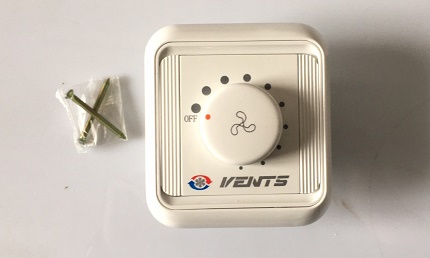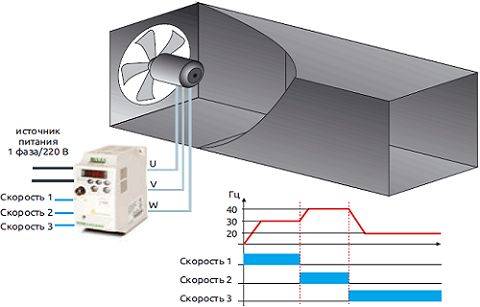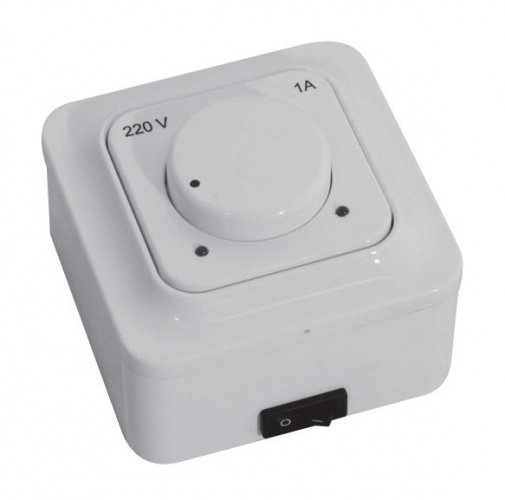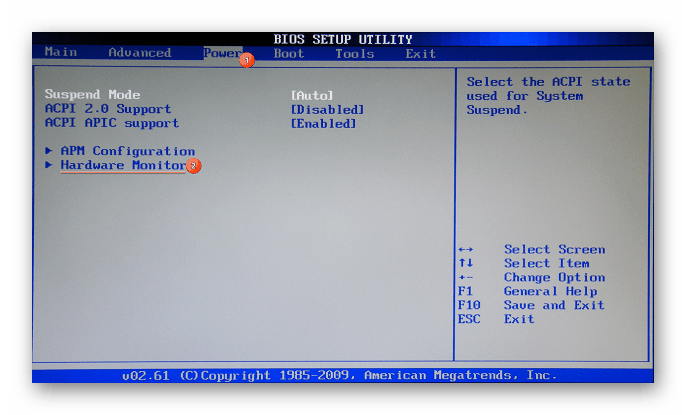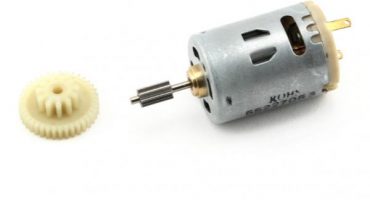The fan refers to auxiliary devices that ensure the normal functioning of the equipment and create comfortable conditions for work and rest of people. Without these housing devices, the operation of PCs, air conditioners and other climatic equipment is impossible. To increase the efficiency of their work will require a special device that allows you to adjust the fan speed.
Adjustment methods
For electric hoods installed in residential premises (in the kitchen, as well as in toilets and bathrooms), a simple control option is provided. In this case, only two states are possible: on or off.
Note! In the toilet rooms, devices are often equipped with a presence sensor that provides energy savings.
For more economical operation of the device (it is not always necessary for it to work at full power), it will be necessary to adjust the fan speed. Before buying a product, be sure to consult the seller about the availability of the appropriate option.
It is possible to implement the specified function in the following ways:
- changing the frequency of the current supplied to the motor winding;
- varying the level of supply voltage;
- change in power given to the load.
In practice, adjustment is carried out by means of special devices (controllers) in which various control principles are applied.
The principle of operation of the regulator
To control the fan rotation speed, the principle of changing the parameters of the electromagnetic field acting on the winding of the motor rotor is used. In some cases, it concerns its frequency, and in the other two, the voltage and power of the control signal.
The first option is the most economical (there is no heating of the windings), but its implementation will require expensive equipment.
For this reason, frequency controllers that change the fan speed are used extremely rarely in everyday life.
For domestic needs, circuits are more suitable, the principle of operation of which is based on a change in the amplitude of the supplied voltage and the value of power. They are not very expensive and provide a noticeable reduction. fan noise. Adjustment with their help does not affect the amount of electricity consumed. As a rule, they are installed in low-current circuits.
To implement the described control principles, various electrical circuits of the controllers are used, which need more detailed consideration.
Regulator circuit
There are several circuit solutions that form the basis of the work of regulators. It:
- autotransformer type step devices;
- PWM electronic modules;
- semiconductor controllers.
Step control using an autotransformer is implemented by changing the number of turns connected to the fan input. Pulse-width control methods are based on varying the instantaneous power transmitted to the load. Semiconductor regulators work on the same principle, but thyristors or triacs perform a working function in them.
The easiest way to increase and decrease speed
We consider the operation of the regulator as an example of a simple autotransformer circuit.
The 220 Volt supply network is connected to the T1 autotransformer coil, which has several branches. When the load is connected in series to branches 1, 2 and 3, only part of the mains voltage is supplied to the M1 winding. Simultaneously with his decreases the fan speed. The advantages of such systems include obtaining an undistorted sinusoid at the output, and the disadvantages are the impossibility of smooth control.
Mounting and connecting the speed controller
Known models of household regulators are available in the following versions:
- Wall mounted product for outdoor installation.
- Wall mounted controller for flush mounting.
- DIN rail mounted model.
Please note: The installation procedure for the first two positions is the same as for the installation of sockets or lighting switches in a concealed or open design.
The branded product is marked, having examined which even a novice will be able to connect the speed controller to the fan independently. With a conventional switch, the old footprint can be used to install the new model.
If the control module and controller are located in two different cases, the installation of the device is somewhat more complicated. The mains voltage is supplied to the control unit directly from the electrical panel, and communication with the executive module is carried out by means of a low-current wire.
How to reduce or increase the speed of the exhaust fan
In exhaust systems, increasing or decreasing the fan speed allows you to change the flow rate, which affects the air exchange as a whole. To control it, one of the methods already considered is used (by changing the voltage or frequency of the current).
In practice, the first of the methods is used, since the frequency regulator in this case will cost more than the fan itself. A feature of this method is its simplicity and low cost, which is very important for household systems and devices used in public buildings.
It is possible to increase or decrease the drawing speed by a simple mechanical method. For this, in some samples of the control modules, a small wheel is provided, by means of which the engine speed is changed stepwise or smoothly.
Reduce radiator fan speed
There are two ways to adjust the rotation speed of the radiator fan cooling the PC processor:
- Change some BIOS settings.
- Programmatically.
Using special programs sometimes causes some difficulties, so it will be easier to consider the first of these options. For its successful implementation, the user just adhere to the following instructions:
- Turn on the PC and in a known way go to BIOS.
- In the window that appears, find the "Power" tab.
- Then go to the “Hardware Monitor” section.
Further actions are performed according to the prompts of the system.
Reduce fan speed 3 PIN
In a situation where the PC motherboard has a 3-pin connector, it is allowed to connect most models of typical fans with a PWM controller to it. But this is only possible with the appropriate connector. The adjustment mode by such devices is supported in the presence of both a 3-pin connector and its 4-pin analogue.
There is one subtlety, consisting in the fact that the speed sensor will not work. When the video card has a 4-pin connector, only a native fan can be used to cool it. Otherwise, unforeseen complications will arise with controlling its rotation speed (it will be very difficult to set up the mode).

